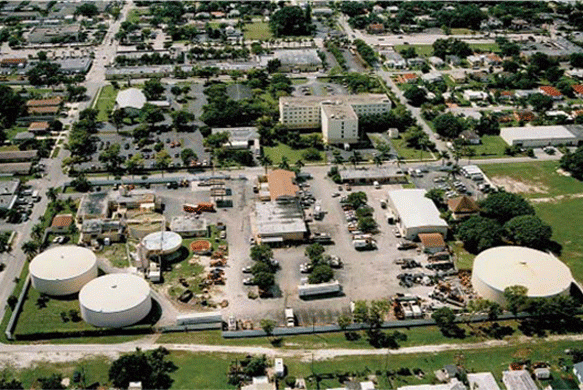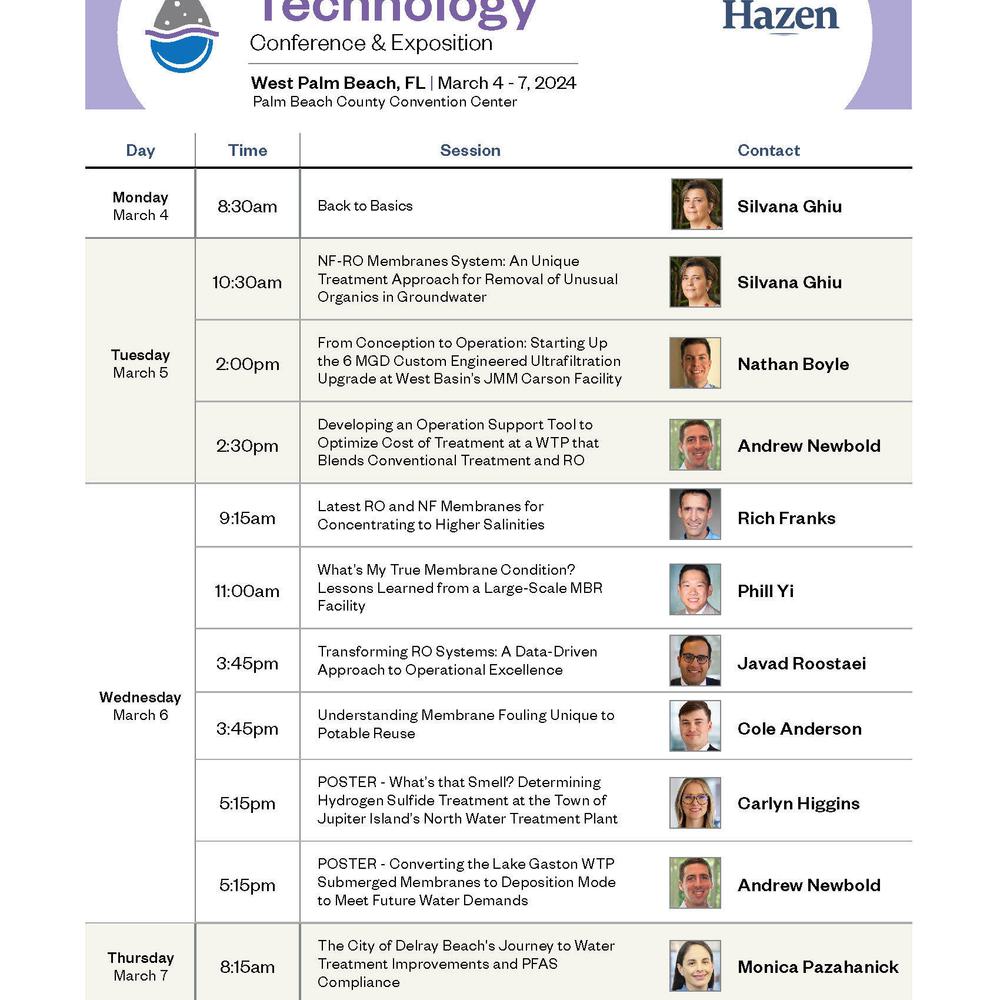Taking Project Delivery to the Next Level: Leveraging Virtual Reality and CMAR
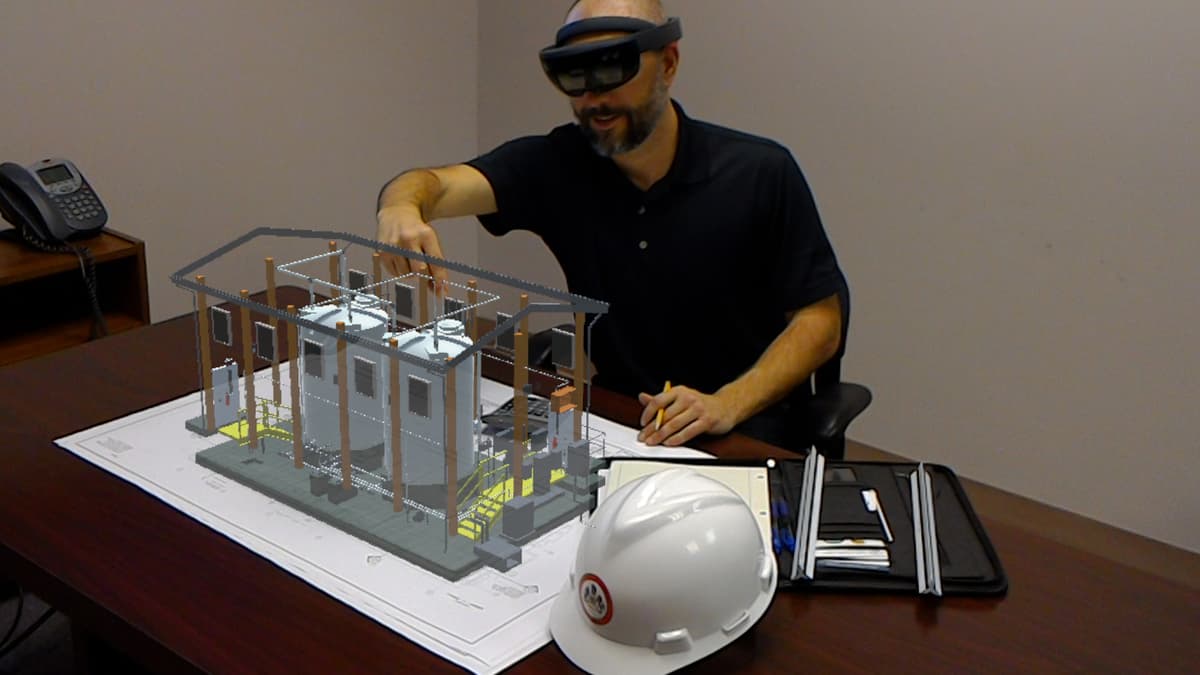
Fairfax County staff using a virtual reality headset to review detailed design of the chemical storage building.
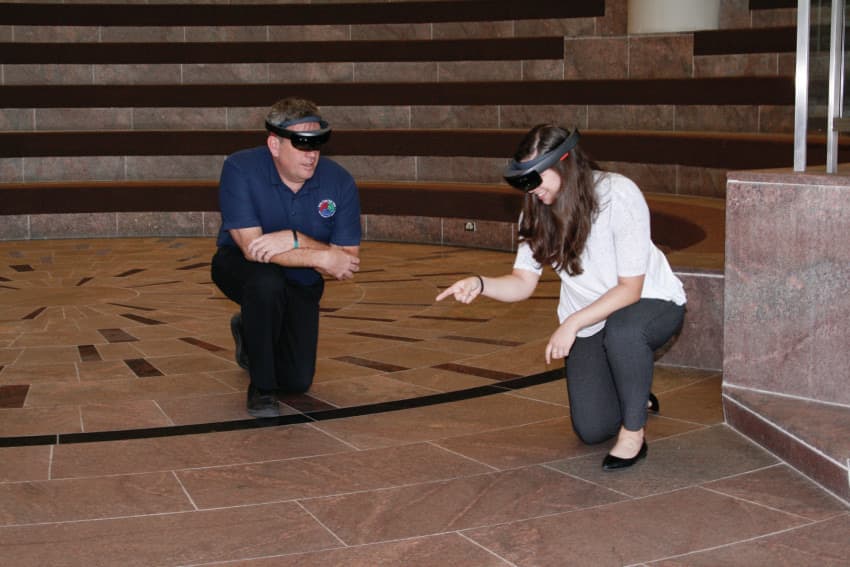
County staff walk through 3D plans projected at scale in the public works building’s lobby. After touring the plant using the goggles, operators suggested tweaks that won’t have to be fixed during construction. Construction-management-at-risk combined with this wearable technology is expected to shave a year off construction. (Source: Public Works)
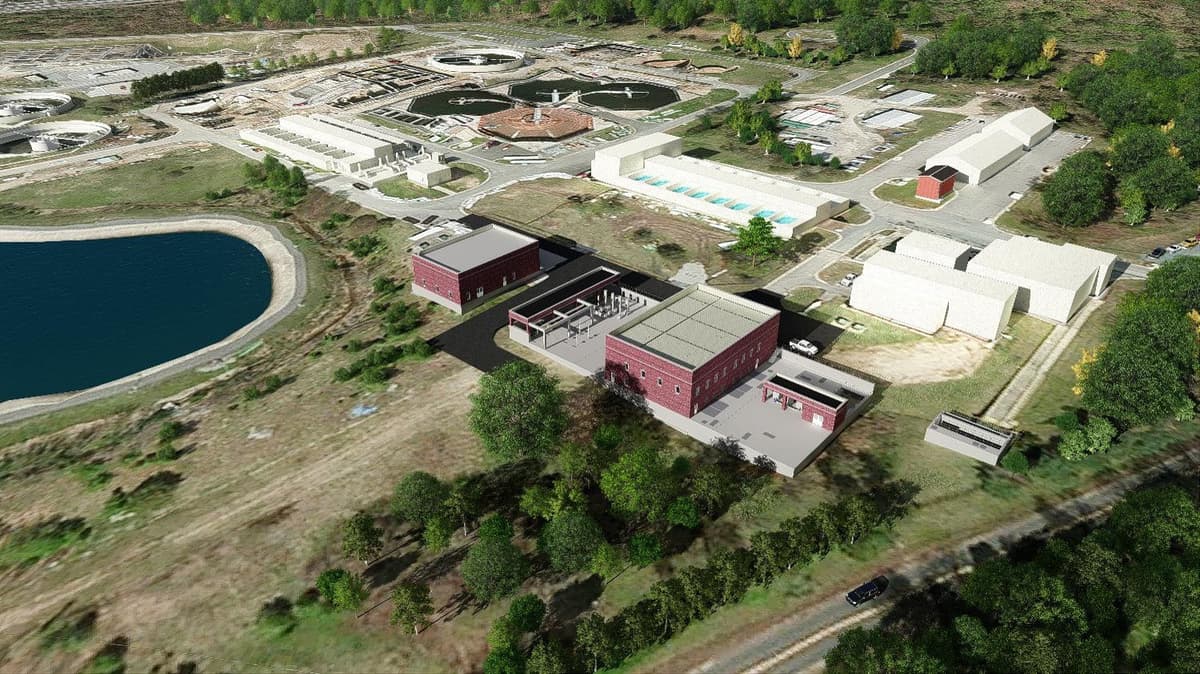
Future UV disinfection building, pump stations, and chemical storage building are shown here on the existing site.
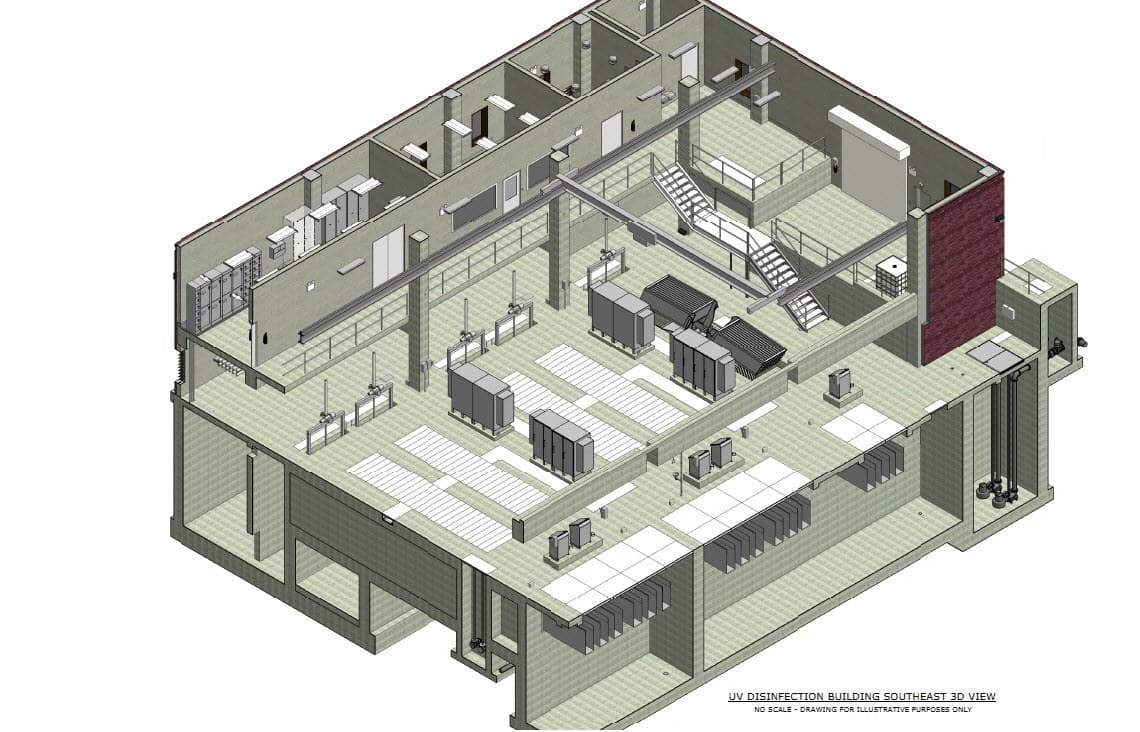
Interior view of the UV disinfection building, one set of UV lamps is raised to illustrate accessibility for maintenance activities.
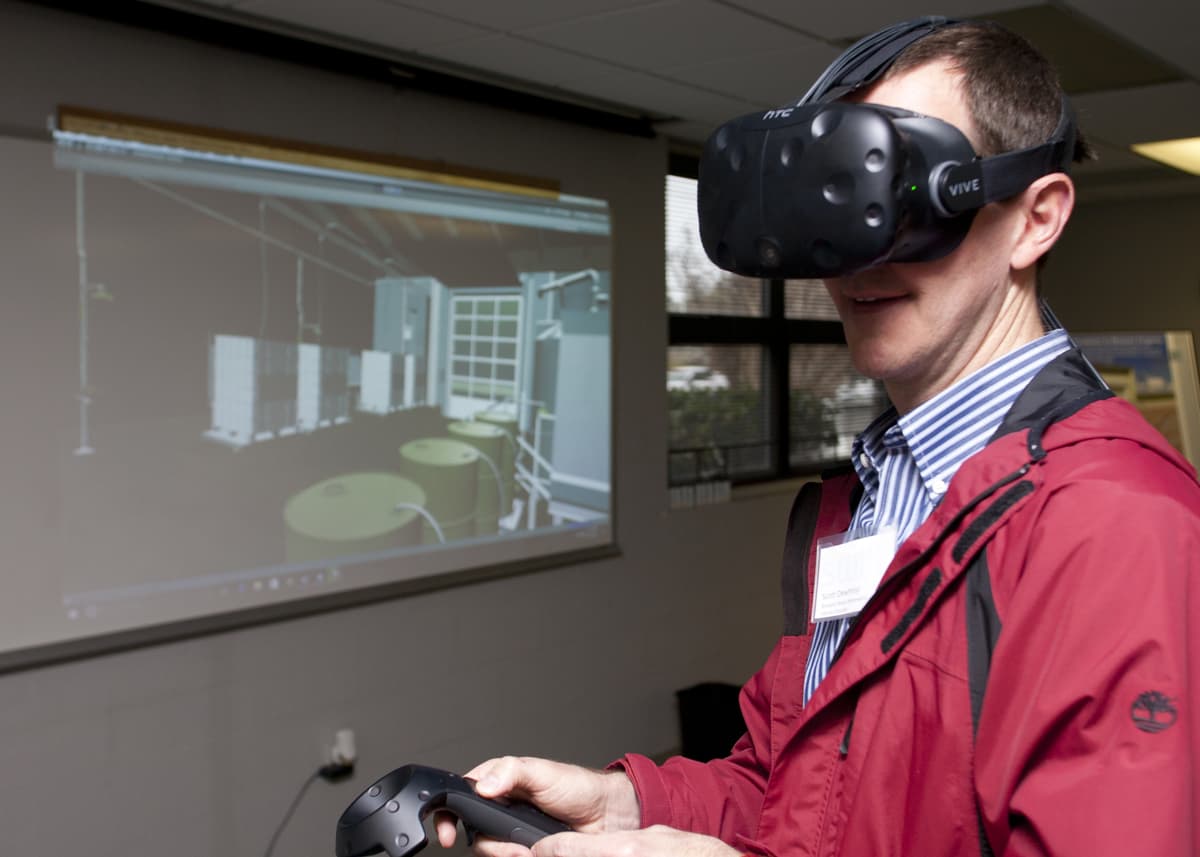
Hazen is helping other utilities take advantage of the benefits of virtual reality, including Hampton Roads Sanitation District and their SWIFT Research Center.
The Noman M. Cole Jr. Pollution Control Plant (NMCPCP) is a 67 mgd wastewater treatment plant located in Fairfax County, Virginia. NMCPCP is currently undergoing $1.3 billion in capital improvement and reinvestment projects, including a $72 million project to upgrade the plant’s wastewater disinfection system.
Under the innovative leadership of Fairfax County’s Department of Public Works and Environmental Services (DPWES), the Disinfection Project is the first public works project in the County to use virtual reality to enhance design and the alternative project delivery method of “Construction Management at Risk (CMAR)” to streamline the construction process.
Using Virtual Reality for Complex Design
Though a comprehensive alternatives evaluation, Fairfax County selected UV disinfection as the preferred technology for meeting current and future permit requirements while reducing chemical, monitoring, and labor costs.
The county’s design engineer, Hazen and Sawyer, was already using building information modeling (BIM) to prepare the design of the new facilities, and county project manager Matt Doyle saw this as an opportunity to bring virtual reality technology to the design process. After each step of the design process the BIM models were processed into a “video game” type app that was viewed with a Microsoft HoloLense holographic headset.
The transformation of the 3D design into the HoloLens technology allowed operations and maintenance staff to virtually walk through a full-scale model of the facilities and evaluate the design to ensure functionality and accessibility. Operations and maintenance staff actively engaged in the design review process and provided valuable feedback on the location of various pieces of equipment and the clearances required to access and maintain them. The collaborative process between the design engineer and county staff allowed for early identification of operations and maintenance preferences.
As UV disinfection is a new process at NMCPCP, it is critical that the maintenance staff understand how to remove the UV lamp banks, replace the lamp and wiper sleeves, and change the cleaning solution. With the use of the virtual reality models the maintenance staff could visualize the process and were able to identify some safety concerns. They then worked with Hazen and Sawyer staff to select mechanically operated UV bank covers to reduce staff exposure to fall hazards.
Alternative Project Delivery – Construction Management at Risk
Early in the design phase DPWES Capital Facilities staff saw an opportunity to improve project delivery and expedite project schedule through use of Construction-Management-At-Risk (CMAR) delivery. CMAR delivery streamlines the transition from design to construction and allows for a more qualification-based approach for selecting the constructors and the equipment manufacturers. The challenge was that Fairfax County had never executed a CMAR contract.
Over a five-month period, DPWES Capital Facilities staff worked with the county attorney’s office and the Department of Procurement and Material Management to develop the necessary administrative framework. The county’s new procedures allow CMAR to be used when fast-tracking is needed, when value engineering and/or constructability analyses concurrent with design are required, and when projects are at least $10 million (or have a special waiver).
The county’s Board of Supervisors adopted the new procedures in October 2015, which cleared the way to use the Disinfection Project as the county’s first CMAR project. The beauty of the CMAR approach is that it allowed the county to select a construction manager, who is eligible to self-perform up to 50 percent of the work, based on qualifications and unit costs, rather than the lowest bidder.
Project Success to Date
Design of the Disinfection Project commenced in December 2015. Fairfax County selected the CMAR Contractor in April of 2016, and notice to proceed with construction was granted in May 2017. Over the 18-month design phase, integration of virtual reality and the CMAR project delivery method have resulted in innovative solutions that have expedited the project schedule and resulted in a design that fully meets the needs of the end user. By embracing innovative technologies and exploring new methods of project delivery, Fairfax County DPWES has opened the door to a more collaborative atmosphere between their staff, the engineer and the contractor. The county’s adoption of virtual reality and CMAR has also proven successful in streamlining the design and construction approach for a large capital improvement project.
Excerpted from the Fall 2017 issue of VWEA Conduit.










